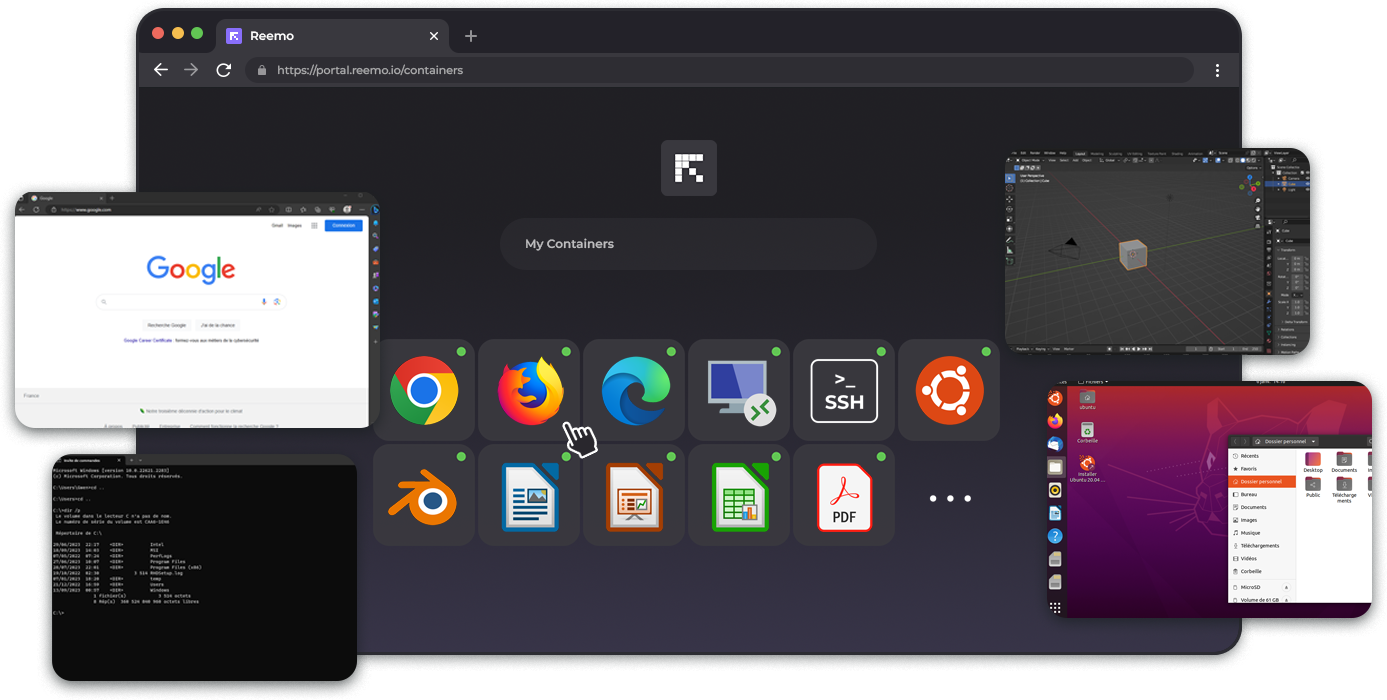Supamonks, recognized as one of the most creative and prolific French studios in the field of 2D/3D...
Enhancing Security: The Role of Remote Browser Isolation in Companies
In this blog post, Yann Fourré, our CEO and cybersecurity expert, will provide insights on remote browser isolation and its significance for companies in enhancing security measures.
 What is Remote Browser Isolation
What is Remote Browser Isolation
Remote Browser Isolation is a cybersecurity technique that separates the user's web browsing environment from their local device. It works by executing web content in a remote environment, isolating it from the user's device and network. This technique ensures that any potentially malicious code or threats are contained within the remote environment, preventing them from reaching the user's device or network.
By isolating the web browsing activity, Remote Browser Isolation provides an additional layer of protection against various cyber threats such as malware, phishing attacks, and drive-by downloads. It allows users to safely access websites and web applications without the risk of compromising their devices or networks.
In Remote Browser Isolation, the web content is rendered on remote servers or virtual machines, and only the visual output is transmitted to the user's device. This approach minimizes the attack surface and reduces the risk of exposing sensitive data or vulnerabilities.
Overall, Remote Browser Isolation enhances security by creating a secure browsing environment that isolates potentially malicious web content from the user's device and network.
Benefits of Remote Browser Isolation for Companies
Enhanced Protection: Remote Browser Isolation provides companies with an effective solution to protect their networks and devices from web-based threats. By isolating web browsing activity, it prevents malware infections, phishing attacks, and other web-based threats from penetrating the company's network.
Reduced Risk of Data Loss: By isolating web browsing activity, Remote Browser Isolation reduces the risk of data loss or leakage. Even if a user accidentally visits a malicious website or encounters a web-based threat, the sensitive company data remains protected as it is not exposed to the user's device.
Increased Productivity: Remote Browser Isolation allows employees to safely access websites and web applications without the fear of compromising their devices or networks. This enables them to browse the internet freely, conduct research, and access cloud-based applications without the risk of introducing malware or other threats to the company's network.
Simplified Security Management: With Remote Browser Isolation, companies can centralize their security management by implementing a single solution for all web browsing activities. This simplifies the security infrastructure and reduces the complexity of managing multiple security tools and solutions.
Compliance with Data Privacy Regulations: Remote Browser Isolation helps companies comply with data privacy regulations by ensuring that sensitive data remains isolated from the user's device. This reduces the risk of data breaches and helps maintain the integrity and confidentiality of company and customer data.
Challenges in Implementing Remote Browser Isolation
Infrastructure Requirements: Implementing Remote Browser Isolation may require significant infrastructure investments, including remote servers or virtual machines to render web content. Companies need to consider the scalability and performance of their infrastructure to ensure a seamless browsing experience for users.
Compatibility Issues: Remote Browser Isolation may introduce compatibility issues with certain web applications or plugins that rely on local resources or access to the user's device. Companies need to evaluate the compatibility of their existing web applications and plugins with the remote environment to ensure a smooth transition.
User Experience: Remote Browser Isolation may impact the user experience, as there may be slight delays in rendering web content due to the remote execution. Companies need to carefully assess the trade-off between security and user experience to strike the right balance.
Integration with Existing Security Infrastructure: Integrating Remote Browser Isolation with existing security infrastructure, such as firewalls and intrusion detection systems, can be challenging. Companies need to ensure proper integration and configuration to maximize the effectiveness of the overall security architecture.
Training and Adoption: Implementing Remote Browser Isolation requires educating employees about the new browsing environment and its benefits. Companies should provide comprehensive training and support to ensure smooth adoption and usage of the remote browsing solution.
Best Practices for Effective Remote Browser Isolation
Choose a Reliable Remote Browser Isolation Solution: Select a reputable and reliable Remote Browser Isolation solution that aligns with your company's security requirements. Evaluate the solution's features, scalability, performance, and compatibility with your existing infrastructure.
Implement Multi-Layered Security: Remote Browser Isolation should be part of a multi-layered security strategy. Combine it with other security measures such as endpoint protection, network segmentation, and employee awareness training to create a robust defense against cyber threats.
Regularly Update and Patch: Keep the Remote Browser Isolation solution and all supporting components up to date by applying regular updates and patches. This ensures that any vulnerabilities or weaknesses are promptly addressed, minimizing the risk of exploitation.
Monitor and Analyze: Implement a comprehensive monitoring and analysis system to detect and respond to any suspicious activities or potential threats in real-time. This allows you to proactively identify and mitigate any security risks associated with remote browsing.
Educate Employees: Train employees on the importance of remote browsing security and provide guidance on best practices for safe browsing. Regularly communicate security policies and reinforce the importance of adhering to them.
Conduct Regular Security Audits: Periodically assess the effectiveness of your Remote Browser Isolation solution through security audits. This helps identify any vulnerabilities or areas for improvement and ensures that your company's security measures are up to date and effective.
.png?width=50&name=Design%20sans%20titre%20(1).png)


